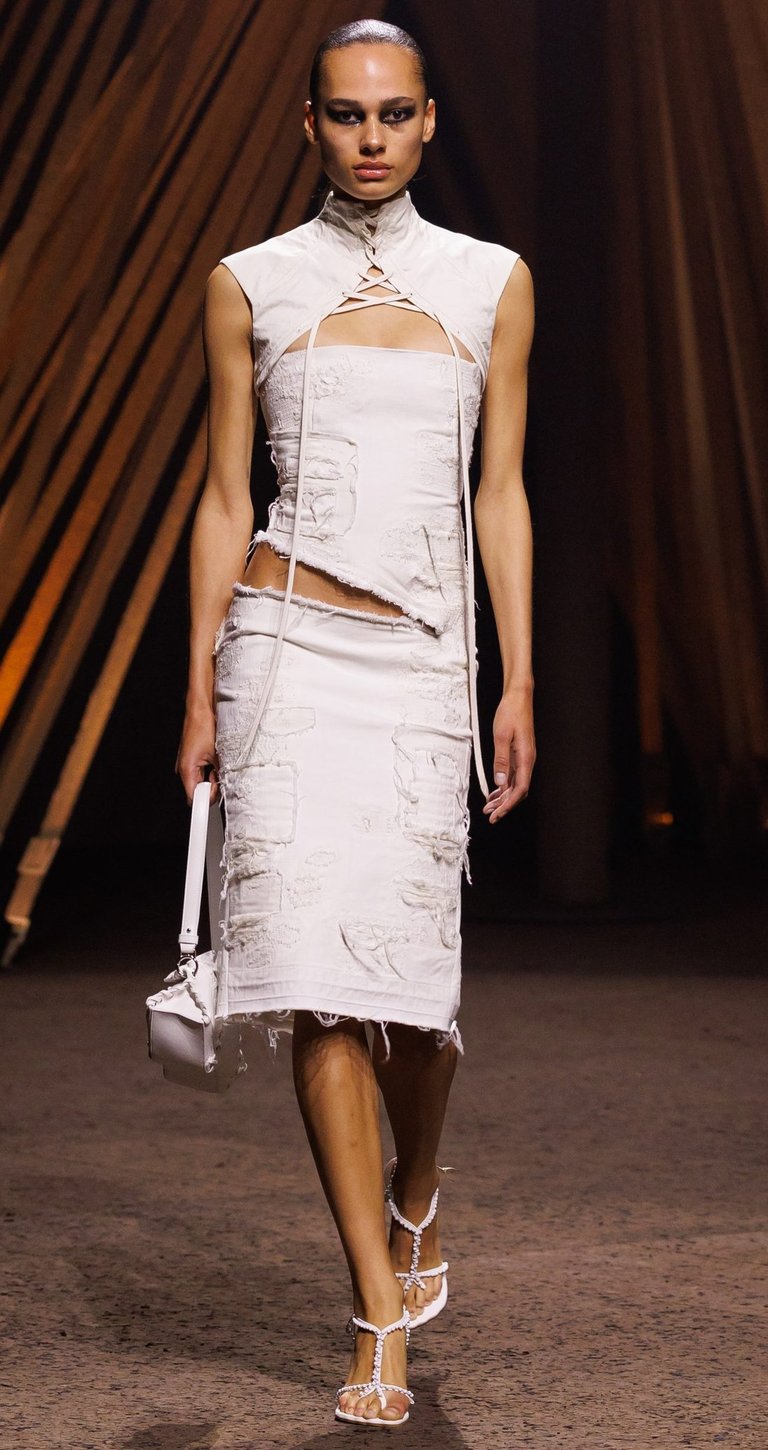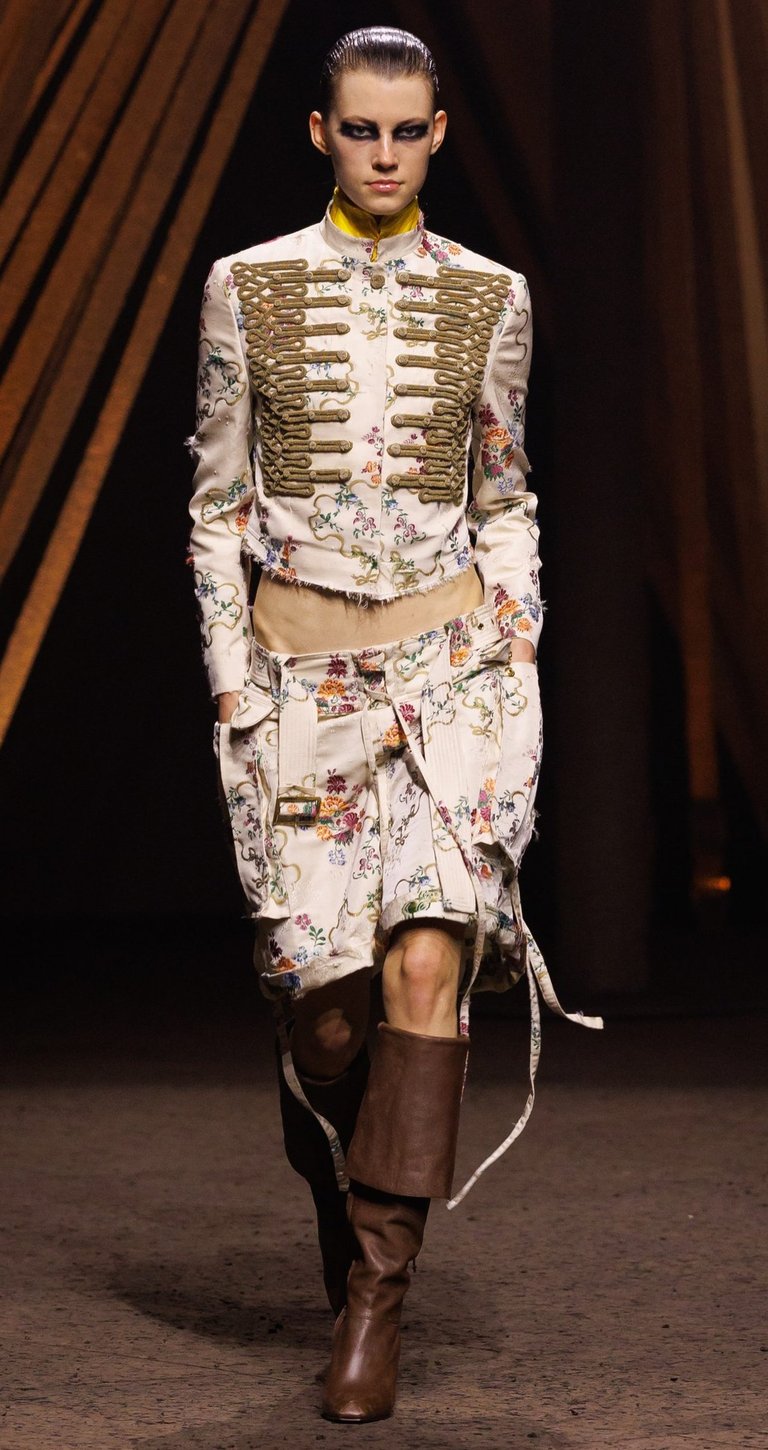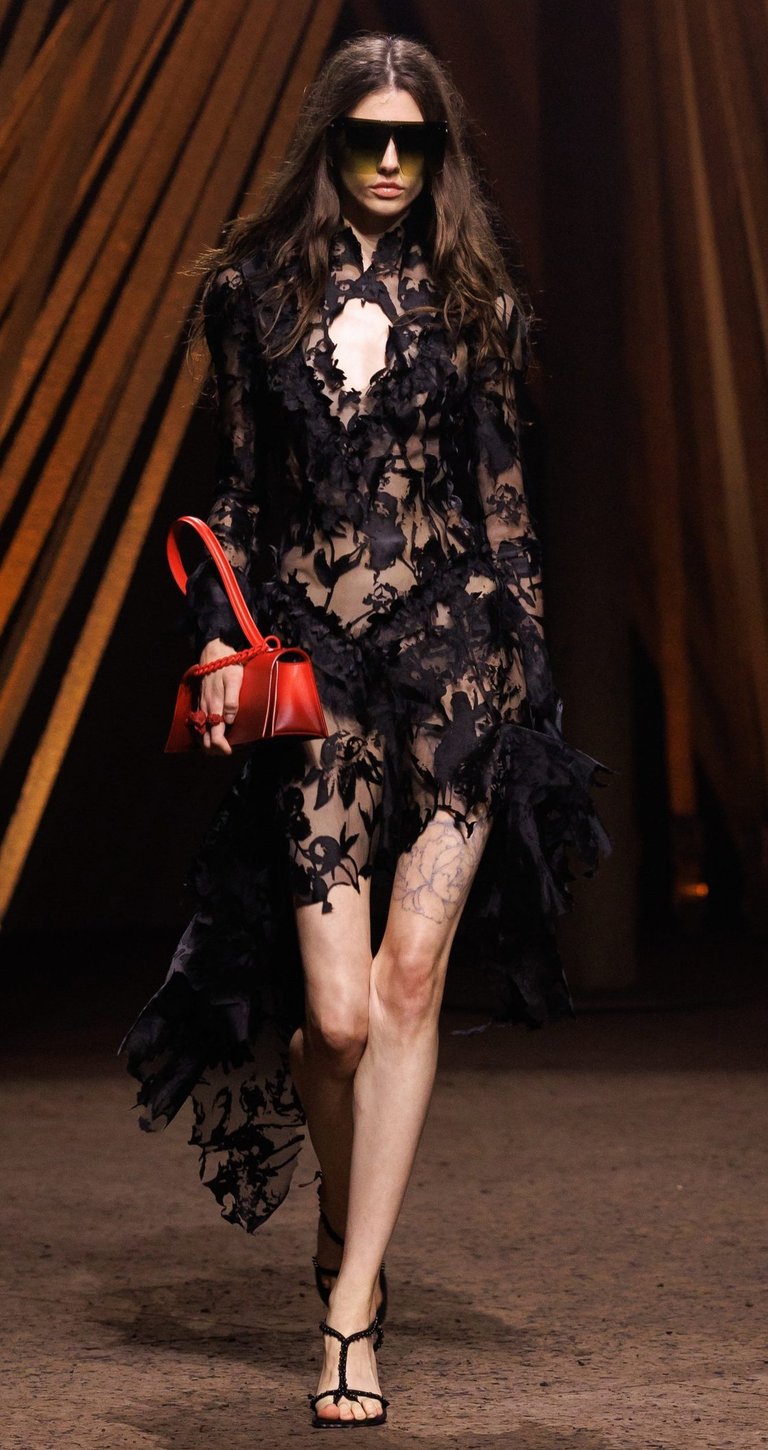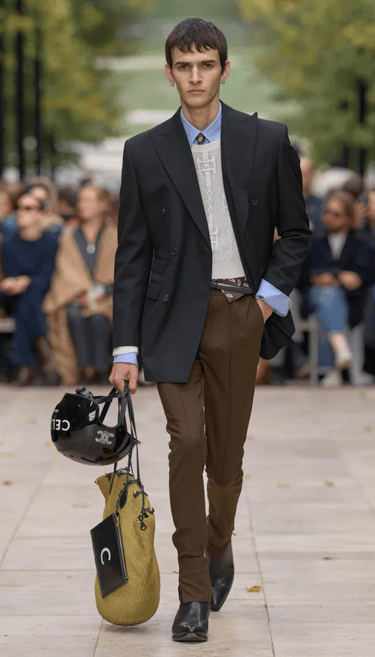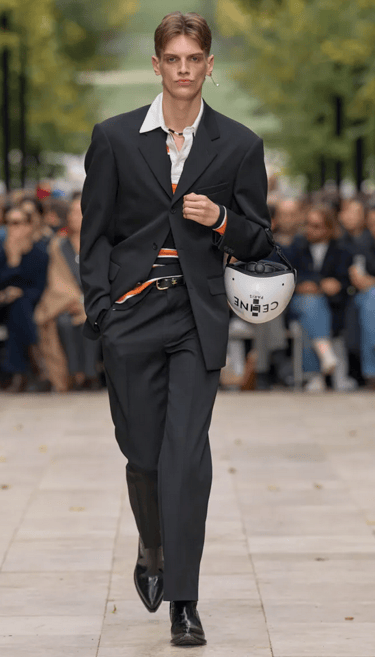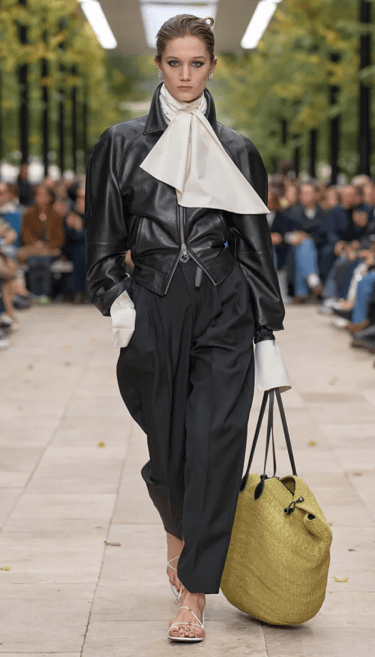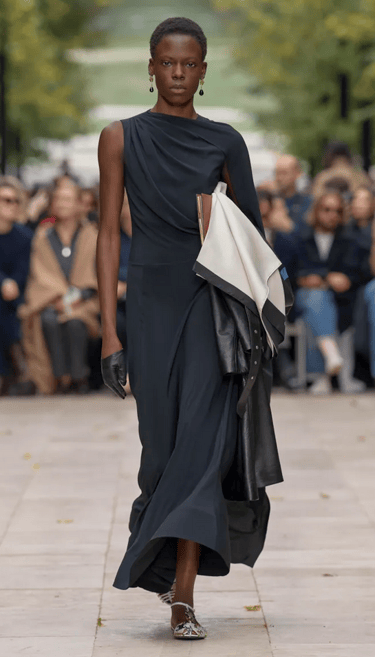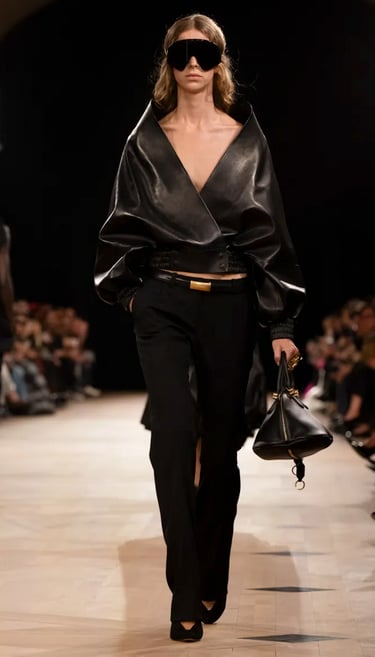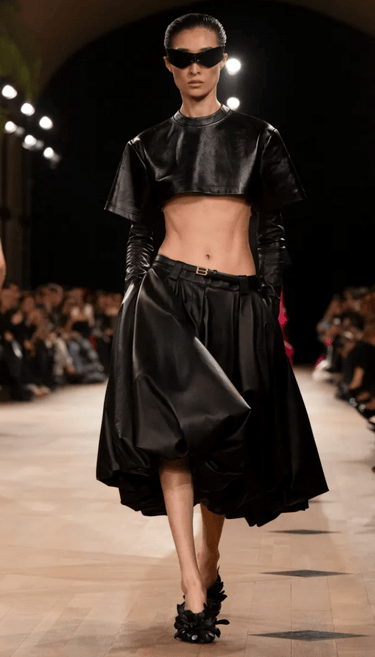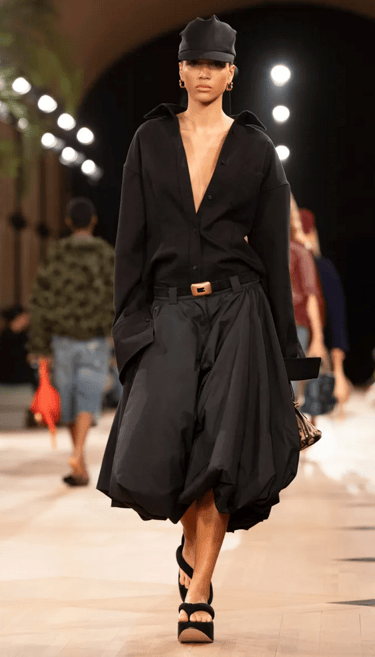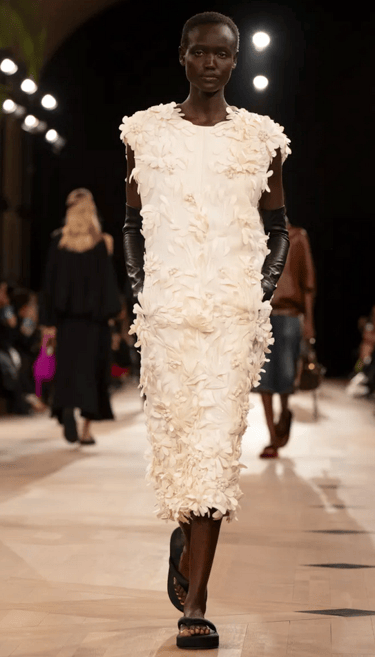Paris Fashion Week 2026: Couture’s Capital - An Affair to Remember on the Seine
Explore the exquisite craftsmanship showcased at Paris Fashion Week 2026. From Alexander McQueen to Louis Vuitton, discover the collections that define Parisian style for Spring/Summer 2026.
FASHION & STYLE
By Sophia Santacruz Perez
10/8/2025
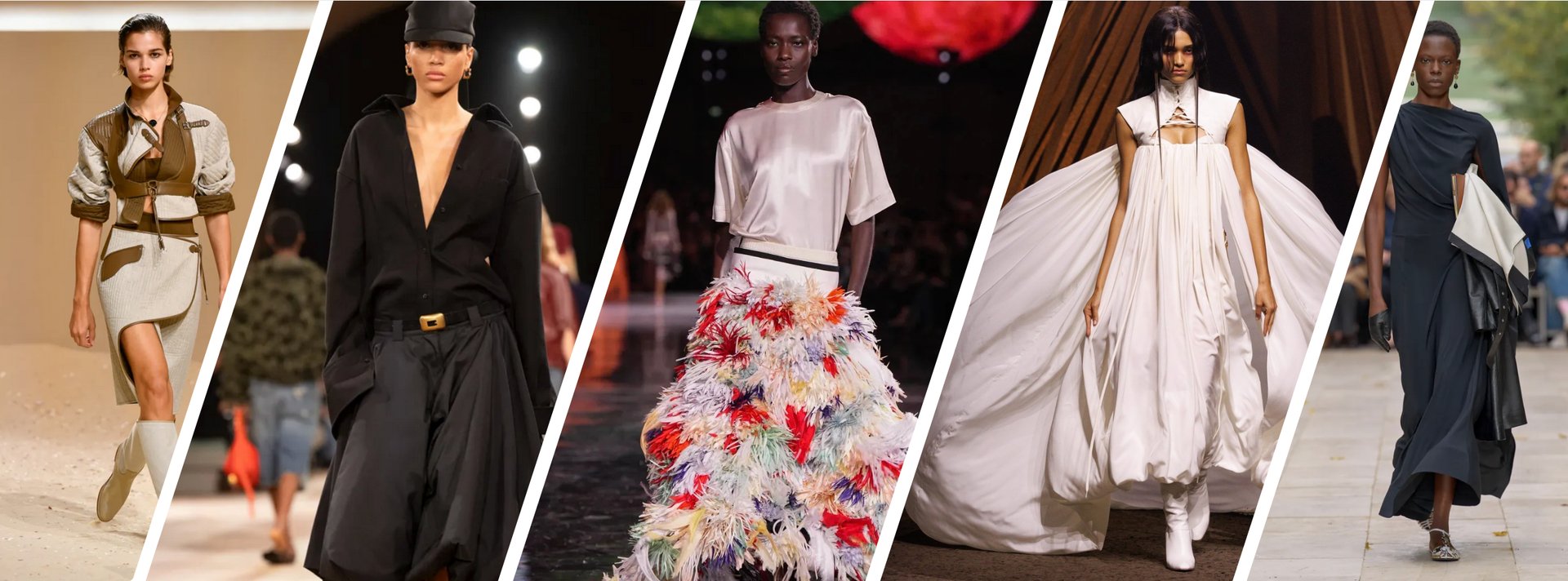
Couture's Capital: An Affair to Remember on the Seine.
A Love Letter to Craftsmanship: The Houses That Built Paris Style
Alexander McQueen
Sean McGirr directed Alexander McQueen's Spring/Summer 2026 collection, which focused on resurrecting house signatures with a new viewpoint. A central theme explored the tension between "carnal restraint and release," drawing inspiration from themes of desire, instinct, and deliverance, particularly The Wicker Man. The clothes had an Ultra-Low Rise style, with extremely low-slung trousers and bustier dresses with the brand's distinctive "slash," as well as accessories like the skull scarf and horn-shaped heel, which reflected a sense of "pagan mysticism." The collection purposefully examined archives to reimagine legendary pieces like the bumster and marching band jacket with a daring, contemporary twist.
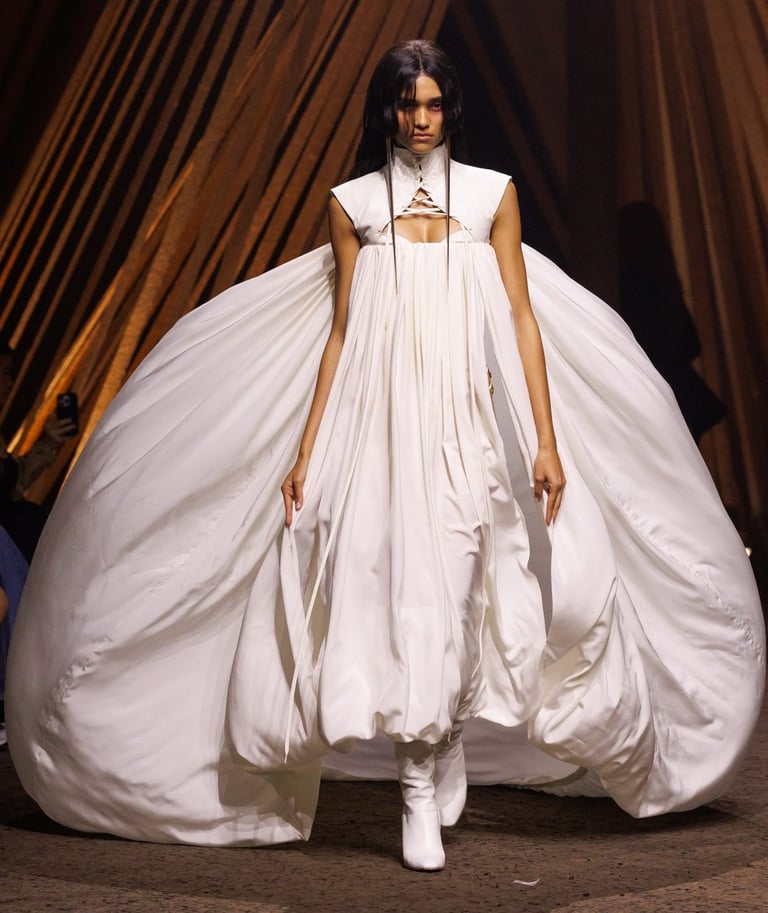

Chanel
Designer Matthieu Blazy made his much-anticipated debut, opting to make a bold statement by treating the show as a “one-time shot” rather than a careful first step. Blazy created a dramatic, cosmic atmosphere, with massive glowing planets and a black runway evoking the universe, reminiscent of Karl Lagerfeld’s spectacular sets. Drawing inspiration from founder Coco Chanel’s “modernity and freedom” and her rumoured practice of wearing her lover Boy Capel’s clothes, the collection began with tailored looks before transitioning into more experimental chapters featuring manipulated textures, such as tweed jackets that appeared “frayed at their edges” and gowns adorned with intricate appliqués. Ultimately, the exhibition conveyed a sense of joy and beauty, culminating in Blazy’s declared goal: to propose something “beautiful and enjoyable” in fashion.
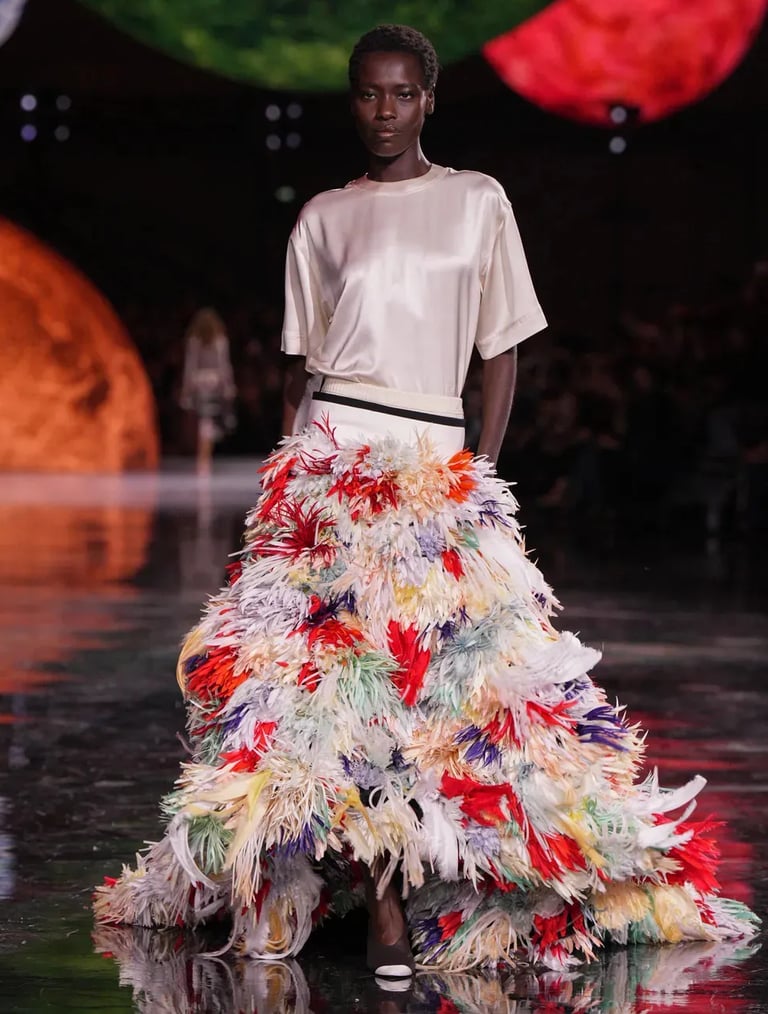

Photographed by Giovanni Giannon, Courtesy of WWD
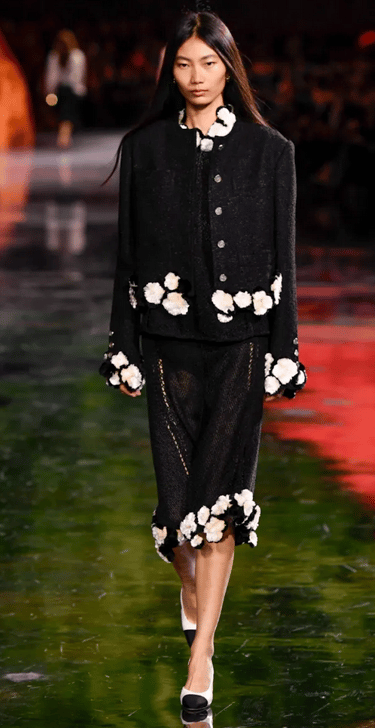

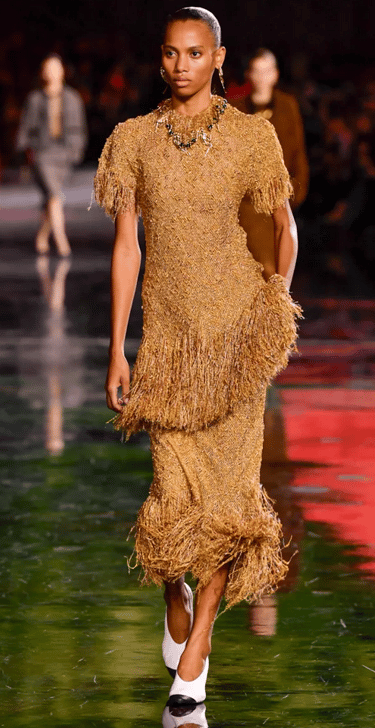

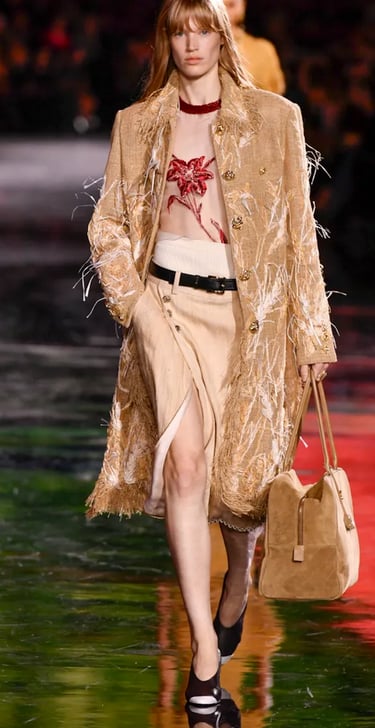

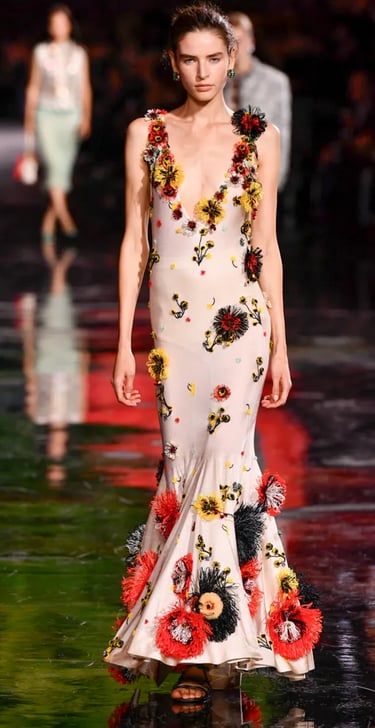

Photographed by Dominique Maitre. Source: WWD
Miu Miu
The Miu Miu collection drew inspiration from photographs of female factory workers, particularly those by Helga Paris and Dorothea Lange, which highlighted the historical significance of the apron as a garment representing women’s labour. Designer Miuccia Prada sought to explore the value of work and women’s “tough lives and pains,” shifting the focus of fashion from beauty to realism. The collection featured a variety of interpretations of the apron, from practical canvas to ornate, fetishistic versions, elevating the apron as a uniform and honouring the often-overlooked hardship of women’s labour throughout history, whether in factories or at home.
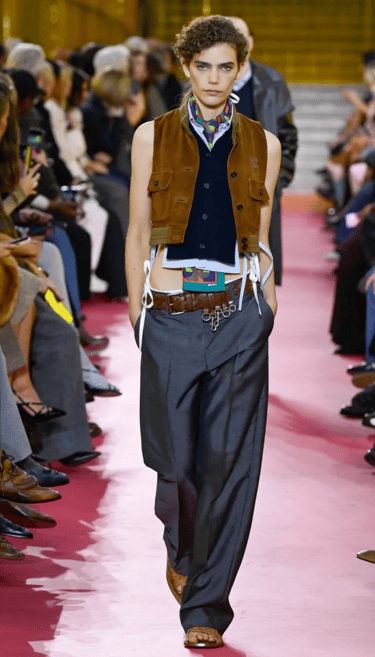

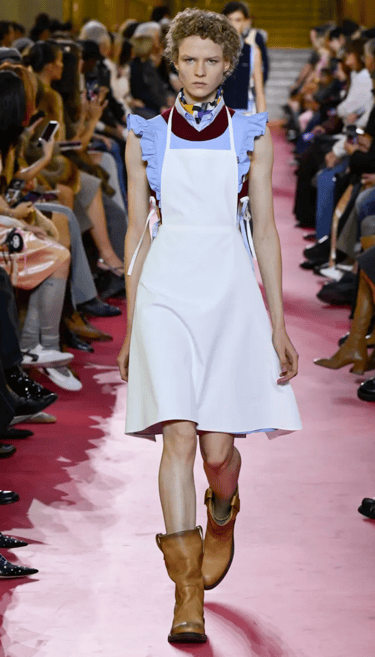

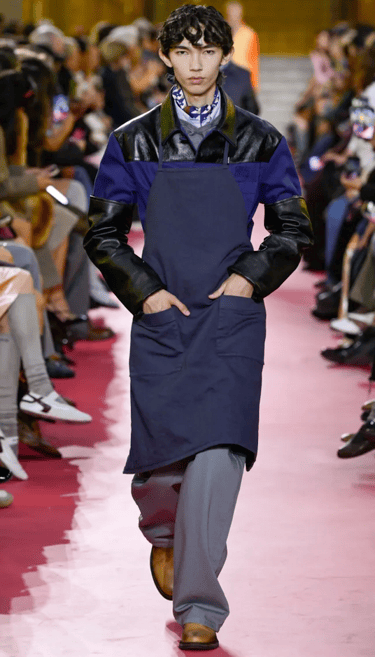

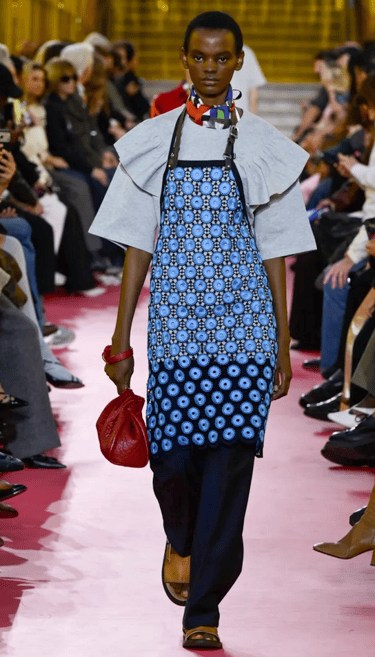

Photographed by Giovanni Giannon, Courtesy of WWD
Jean Paul Gaultier
Duran Lantink's debut collection for Jean Paul Gaultier showcased the Dutch designer's signature aesthetic of exaggerated proportions and surreal effects. Lantink used this "Duranification" technique on the Gaultier archive, changing classic pieces such as the conical bra into cushion-like shapes and supersizing sailor hats. This colourful and aggressive collection, described as a "jolt to the system," was inspired by the chaotic spirit of 1980s Amsterdam nightclub Roxy and Gaultier's younger "Junior" brand, and was eventually approved by the iconic designer himself.
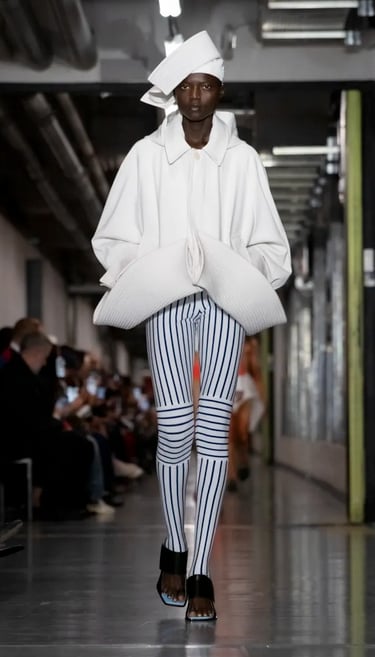

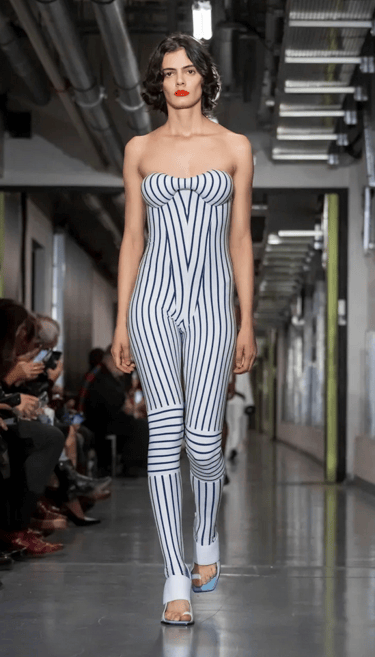

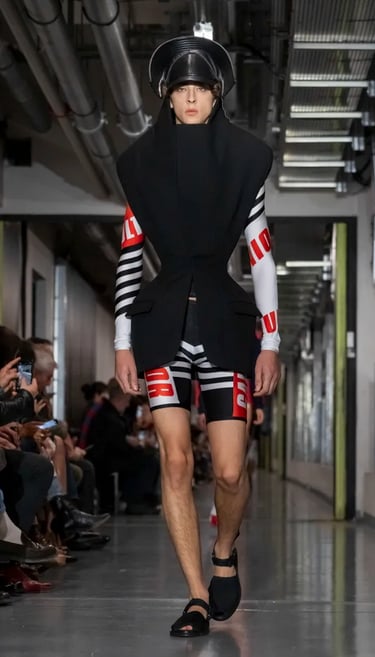

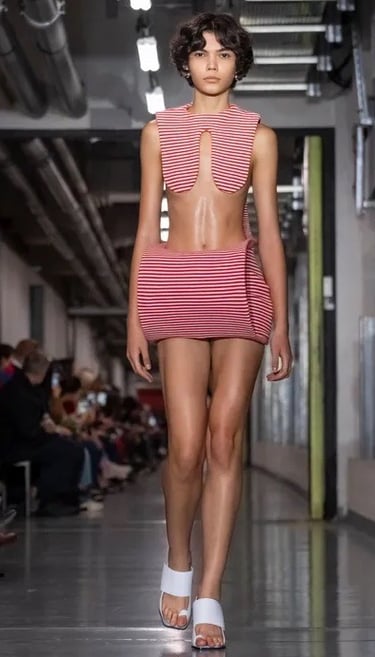

Photographed by Jean Paul Gaultier. Source: WWD
Valentino
Alessandro Michele’s Spring/Summer 2026 Valentino show, titled “Valentino’s Fireflies: A Resistance to Darkness,” highlighted the collection’s rich historical roots. Michele centred the show around the symbolism of fireflies, representing “erratic luminescences bursting with life” and the “ability to resist the darkest night,” explicitly linked to the rise of fascism during World War II, referencing Pier Paolo Pasolini’s 1941 letter. This historical context referred to the “current tremulous era of political discontent,” positioning fashion as a “precious ally” and a reminder of beauty that defies standardisation. The apparel, while slightly more stripped-back than past collections, retained elegance with sumptuous materials, strong tones, crystal embellishments, and the bow motif.
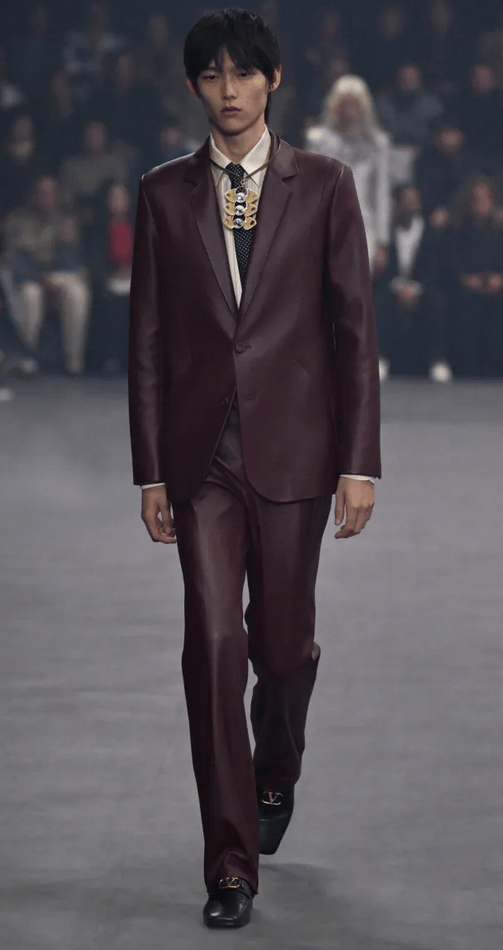

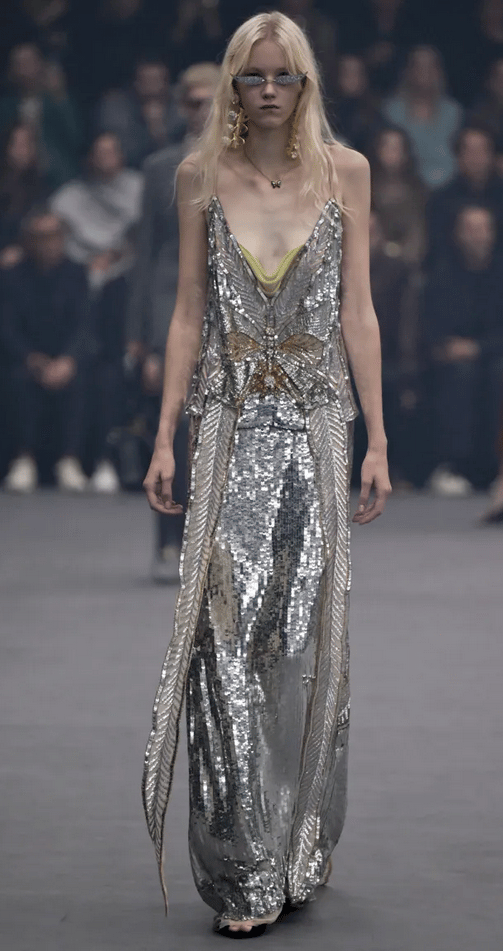

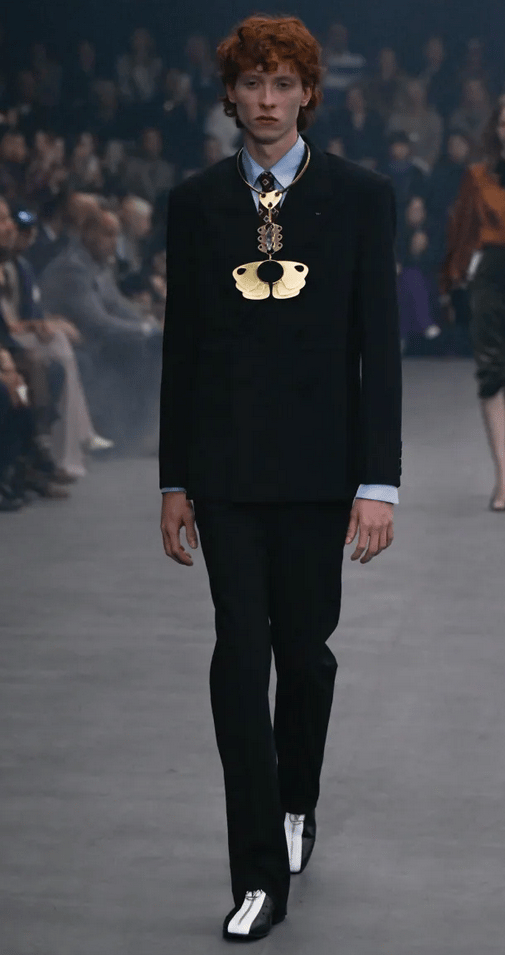

Photographed by Giovanni Giannon, Courtesy of WWD
Celine
Designer Michael Rider chose the ancient Parc de Saint-Cloud outside Paris for his current show, presenting a fresh location away from the metropolis. This collection is regarded as a continuation of his original concept for the house, successfully merging his modern, preppy sensibility with the established aesthetics of predecessors like Hedi Slimane and Phoebe Philo, which he intentionally opted not to erase but rather to expand upon. The clothing offered a comprehensive wardrobe for both men and women, featuring a range of pieces from brilliant tailoring and voluminous trench coats to distinct silhouettes such as flared 1960s minis and super-skinny trousers, reflecting Rider’s understanding of what defines the brand and creates lasting products. Rider’s ultimate goal was to develop clothing that would become part of the memories people create while wearing it.
Balenciaga
Pierpaolo Piccioli’s much-anticipated debut collection for Balenciaga, dubbed “Heartbeat,” follows his successful tenure at Valentino. Reflecting his established style characterised by “an expressive use of colour and a generosity of silhouette,” the collection transformed traditional Balenciaga silhouettes, such as the 1957 ‘Sack Dress,’ into modern, romantic pieces adorned with rich embellishments like flower appliqué and feathers. While exhibiting his vibrant colour palette, Piccioli also included darker elements such as black leather and bug-eyed spectacles, possibly as a reference to his predecessor, Demna’s moodier style. The collection was described as another “heartfelt collection,” reinforcing his belief that fashion should stem from “love and connection.”
Vivienne Westwood
The creation and presentation of designer Andreas Kronthaler’s S/S 2026 collection for Vivienne Westwood, which shares its name, Boudoir, with a perfume created by Westwood and Kronthaler in 1998. The collection explored the concept of a “private, secret sanctuary” where one is closest to their true self, focusing on sensual influences such as decadent antique bedroom draperies and rich Italian textiles, including brocade lace and Sicilian embroidery. Kronthaler’s designs carried on Westwood’s subversive codes with esoteric silhouettes like waist-cinching bodices and chaotic draping, ultimately serving as a love letter to the brand’s three most important cities: Milan, London, and Paris, all underscored by a hopeful Mozart selection.
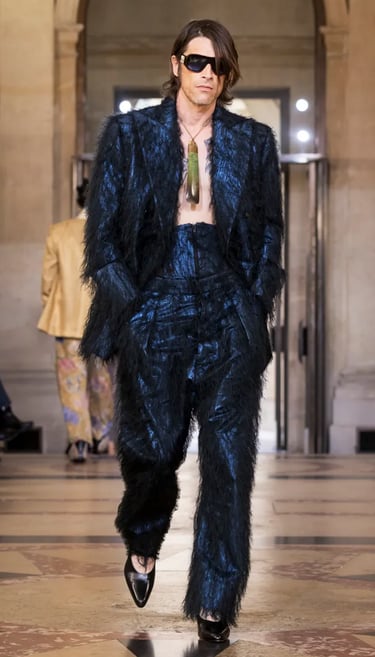

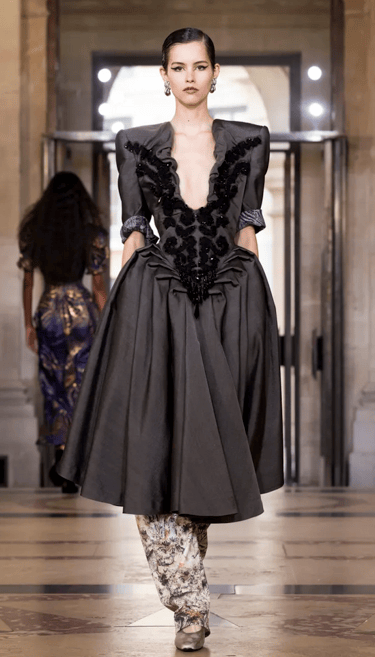

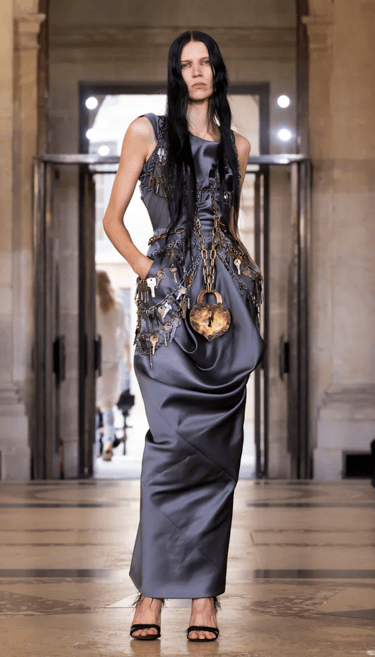

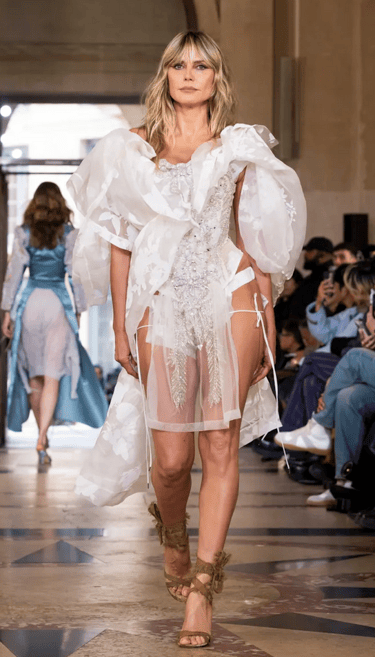

Photographed by Andreas Kronthaler for Vivienne Westwood. Source: WWD
Maison Margiela
Glenn Martens’ first ready-to-wear collection for Maison Margiela was heavily influenced by the brand’s founder, Martin Margiela, who held a revolutionary 1989 exhibition in a derelict playground. Margiela’s debut show, which prominently featured local children drawing invitations and running about the models, marked a watershed moment that removed the artifice of 1980s fashion. Martens channelled the original DIY attitude by including a live, unedited soundtrack for his collection, which was shown at the Centquatre-Paris cultural centre. The collection drew heavily from the Maison Margiela archive, featuring deconstructed glamour, warped eveningwear tropes, and a continuation of the house’s signature experimental aesthetic, including unconventional styling such as simulated stitched-open mouths and garments made from materials resembling red plastic bags.
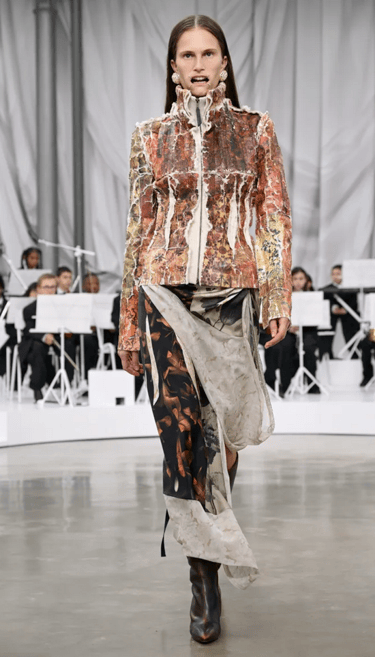

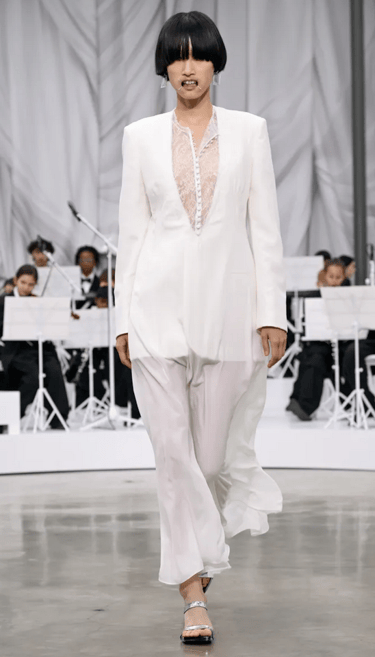

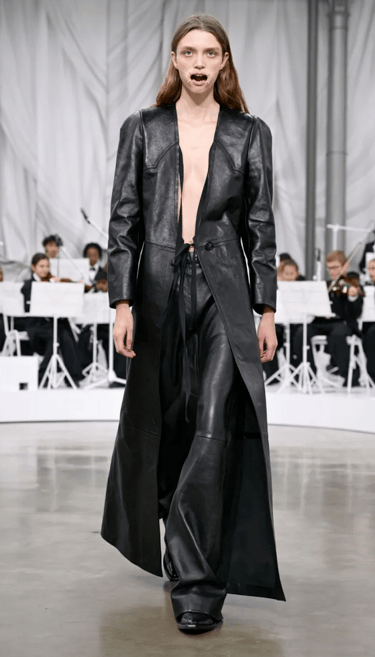

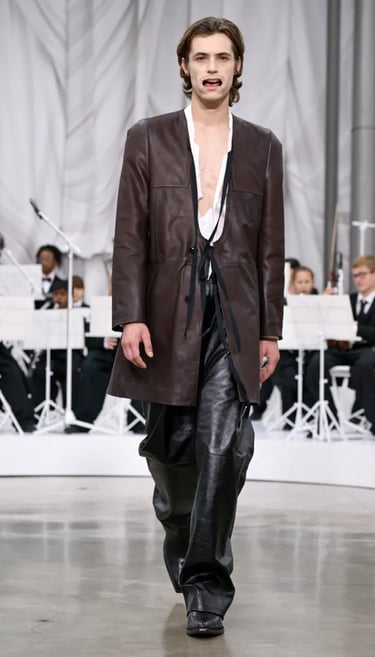

Photographed by Giovanni Giannon, Courtesy of WWD
Hermès
Nadège Vanhée's fashion collection for Hermès S/S 2026, titled "Free Rein," is deeply inspired by the brand's equestrian heritage as well as the rugged beauty of southern France's Camargue. Beginning with a historic Camargue saddle discovered in the archives, Vanhée created silhouettes inspired by its structure, capturing the untamed essence of the region's wild white horses. The collection has a bohemian vibe reminiscent of France's "Wild West," with elements like harness-inspired bra tops, ornamental buckles, and Hermès silk carrés artistically dressed as tops or neck scarves, while accessories included quilted riding boots and unusual tiny handbags.
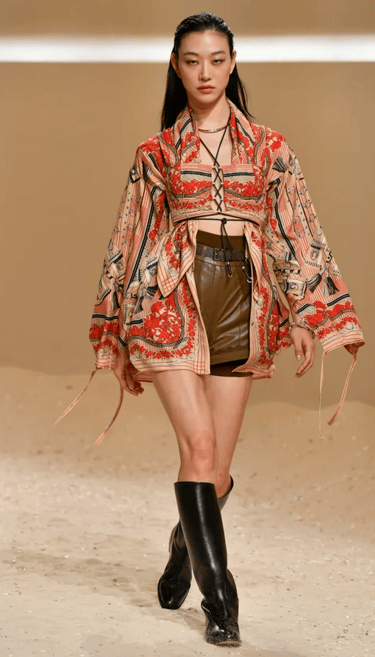

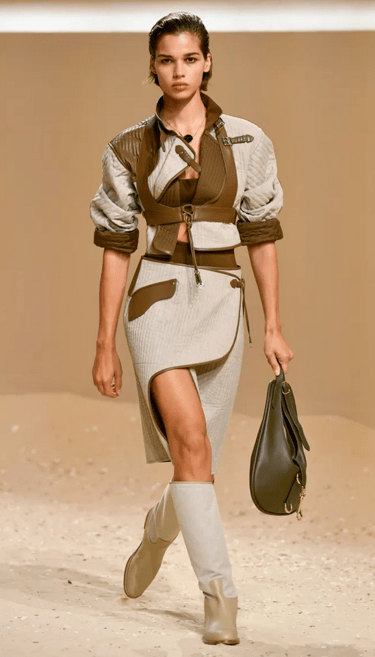

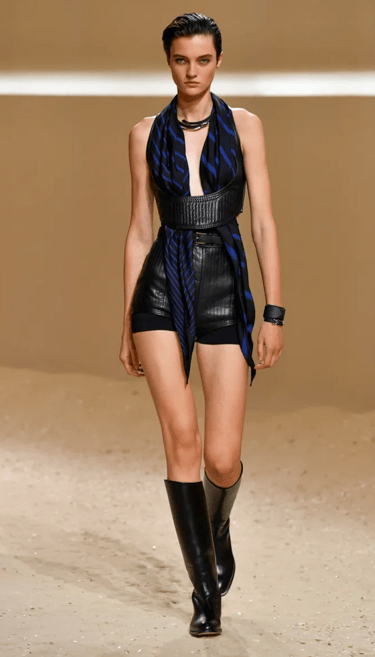

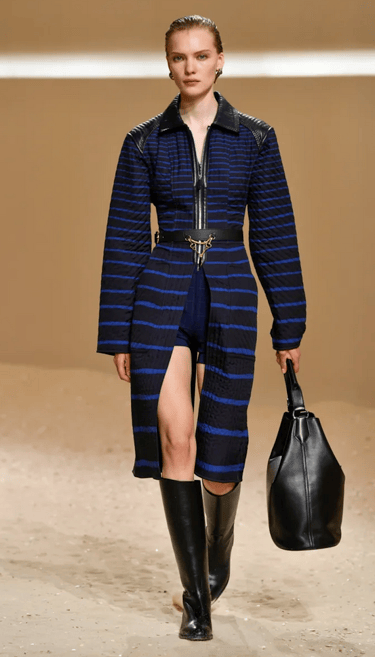

Photographed by Dominique Maitre. Source: WWD
Givenchy
Sarah Burton’s sophomore collection for Givenchy aimed to redefine power dressing for women by moving beyond traditional menswear-inspired suits and finding strength in feminine archetypes. The collection explored a ‘female vocabulary of dress and undress’ by purposefully peeling back structure and revealing skin, showcasing pieces such as pearl-embellished bra tops, tulle accents, and even a dramatic twisted metal bodysuit. Burton noted that her work was based on intuition and lightness, with pieces conceptualised as if a woman were simply wrapping cloth around her body, such as a satin ‘bedsheet gown,’ conveying a sense of liberty and expressive freedom.
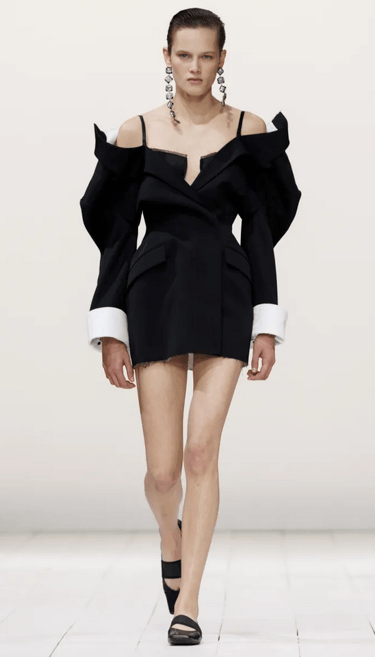

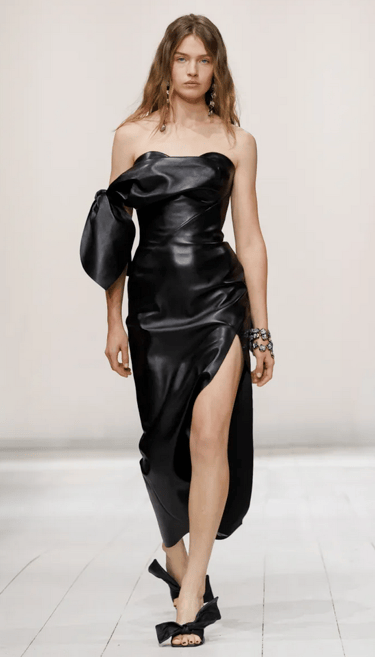

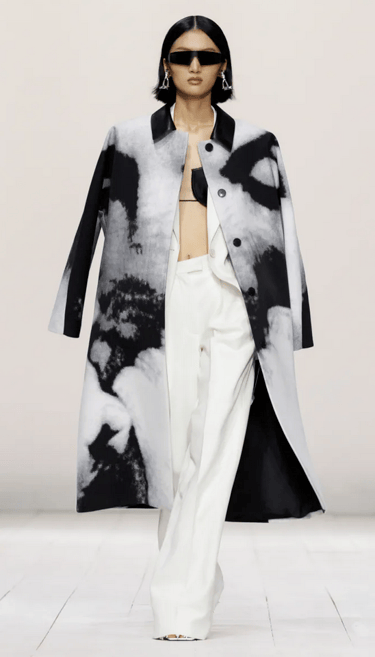

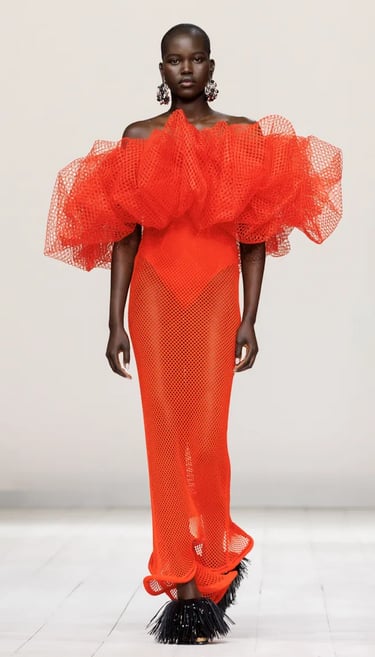

Photographed by Givenchy. Source: WWD
Schiaparelli
Daniel Roseberry’s recent ready-to-wear collection for Schiaparelli pushed traditional fashion boundaries by presenting garments that maintained the unrestrained glamour and spectacle typically reserved for haute couture, transforming a perceived weakness into a strength by asking, “Why can’t fashion, even everyday fashion, be art?” The collection, inspired by house founder Elsa Schiaparelli, emphasised unexpected frictions with drastically fitted forms and textural intricacy, including motifs like dazzling chainmail and exaggerated shoulders. Roseberry revived the house’s surreal flair through accessories that referenced Salvador Dalí, aiming to offer an inspirational, aspirational, and reassuring experience that mirrored visiting a museum. The runway show was positioned as an artistic refuge amid the modern era’s “cultural black hole.”
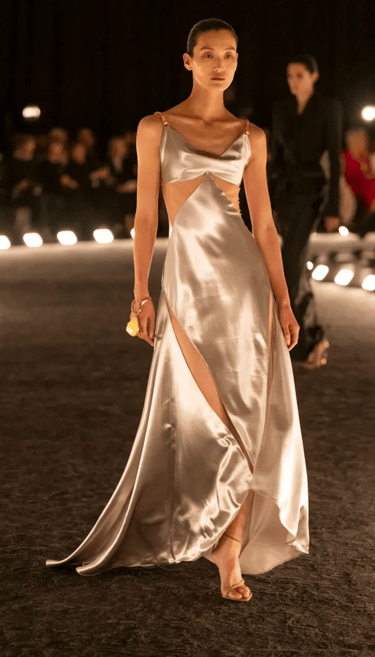

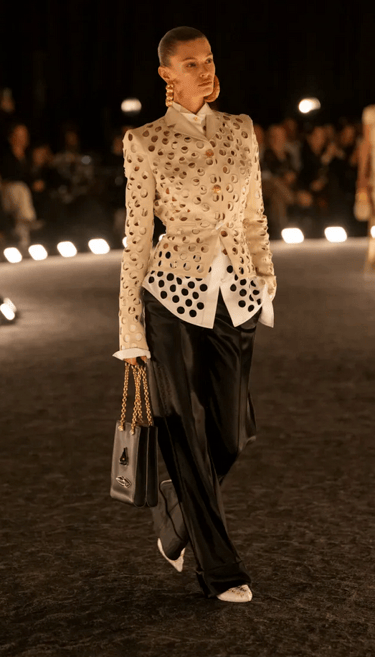

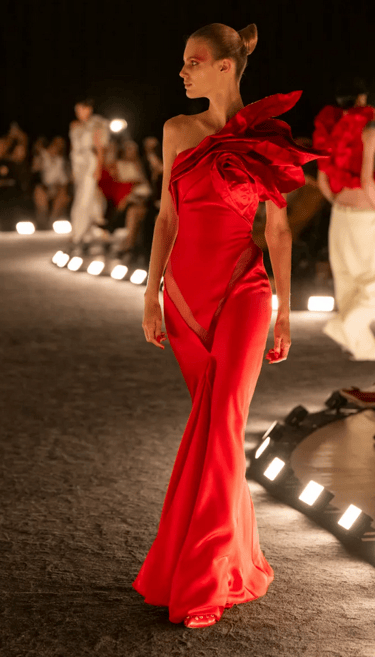

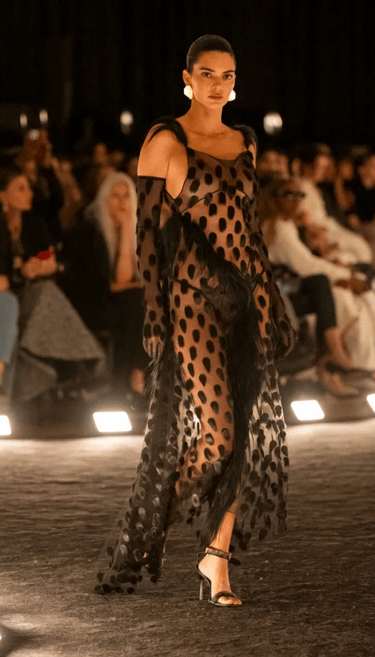

Photographed by Schiaparelli. Source: WWD
Acne Studios
Acne Studios’ Spring/Summer 2026 collection was presented in a dramatic setting at a Parisian church, showcasing a bold balance of contrasts in its design. This collection intentionally blurred the lines between menswear and womenswear by combining seemingly opposing elements, such as lumberjack flannel and delicate lace, as well as evening glamour with everyday casualness. The show highlighted themes of androgyny and celebrated a vision of female identity that is both questioned and honoured, with models selected for their powerful presence and art pieces made from antique gay erotica. Overall, the collection marked the start of the brand’s anniversary celebrations, emphasising the community of artists who have long defined the brand and positioning strong, free women as its future guides.
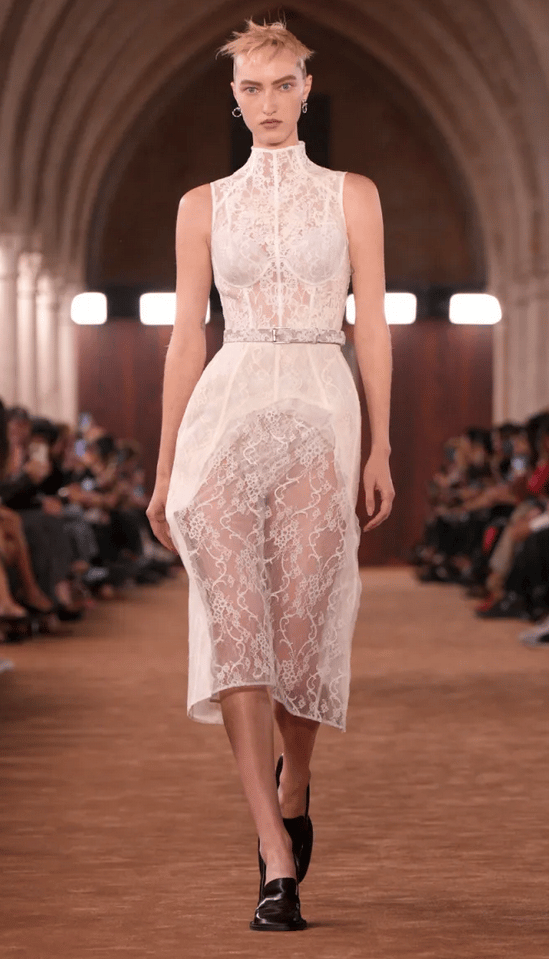

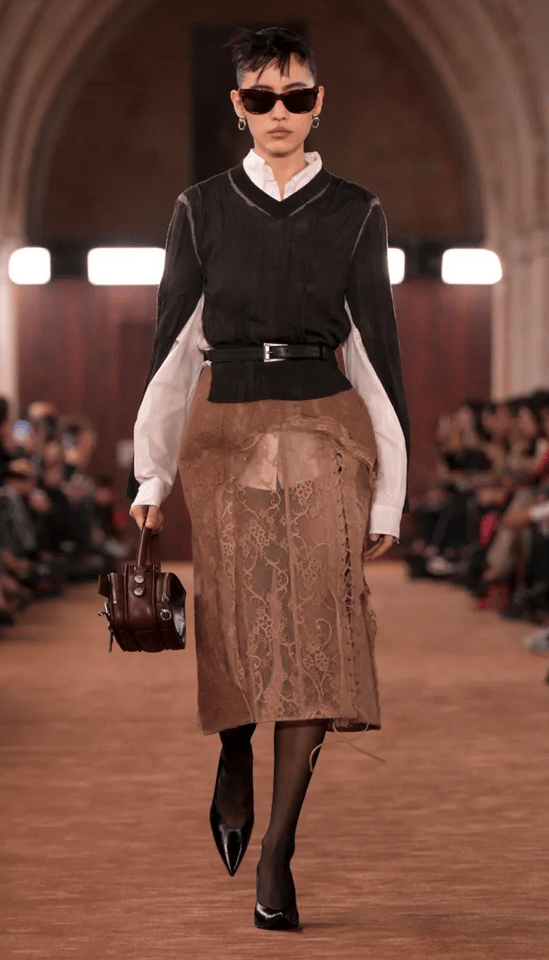

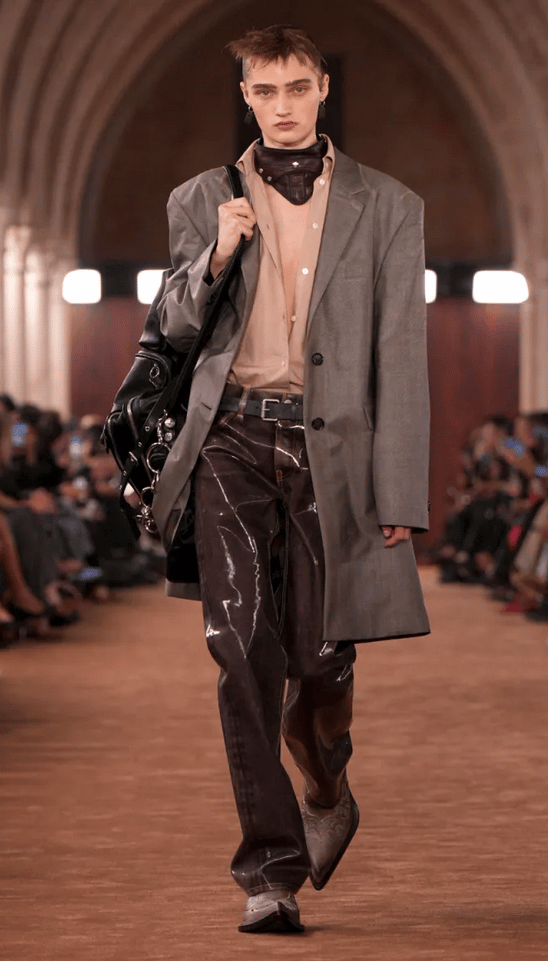

Photographed by Acne Studios. Source: WWD
Rick Owens
The retrospective exhibition “Temple of Love” profoundly influenced designer Rick Owens’ recent creations, acting as a catalyst for his thematic exploration. Owens drew inspiration from the exhibition’s emphasis on “tenacity, peaking, and decline,” powerfully portrayed in his menswear show featuring models overcoming barriers in a scaffold and pool arrangement, indicating his “staying strength.” This concept of perseverance seamlessly transitioned into the womenswear show, as did the designer’s foundational aesthetic blend of “European aesthetic sophistication seen through a filter of American bluntness,” which he describes as his lifelong pursuit of “glamour and sleaze.” The collections, featuring designs that exude a sense of protection and “steely tenacity,” provide “hard garments for terrible times.”
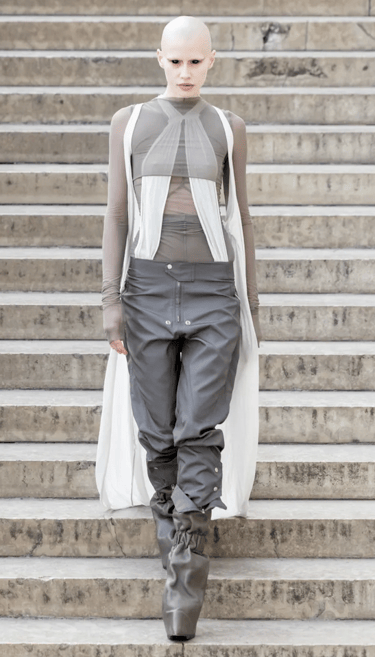

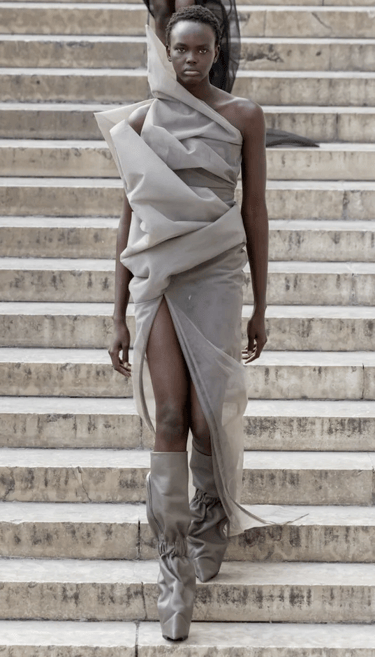

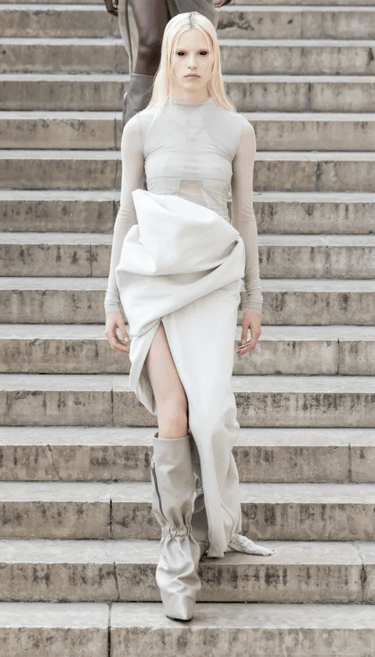

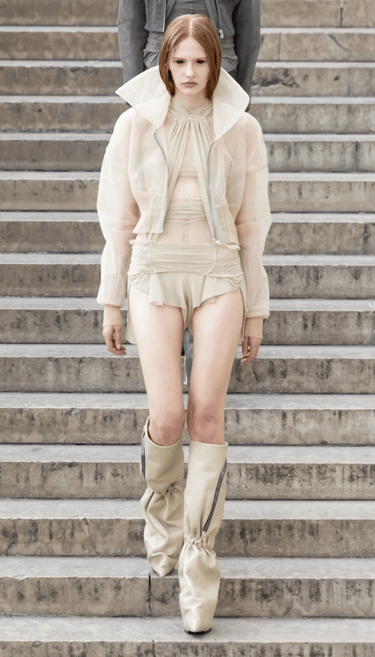

Photographed by Rick Owens. Source: WWD
Christian Dior
Jonathan Anderson’s debut womenswear collection for Dior was preceded by a symbolic short video by Adam Curtis, juxtaposing the fashion house’s extensive history with an abrupt shift to optic white, indicating an intentional fresh beginning. Anderson emphasised that his approach was not to erase Dior’s past, but to archive and revisit fragments, showcasing a willingness to decode the brand’s language while looking forward. His designs cleverly refracted old archive items, such as the nipped-waist Bar suit, into contemporary interpretations like thigh-grazing minis, balancing the tension between dream and reality by incorporating both theatrical silhouettes and wearable denim. Ultimately, the collection generated excitement and showcased Anderson’s knack for constructing a separate, surprising universe around his designs, suggesting that his intention is not merely to enter the Dior house but to fundamentally renovate it, akin to his revolutionary work at Loewe.
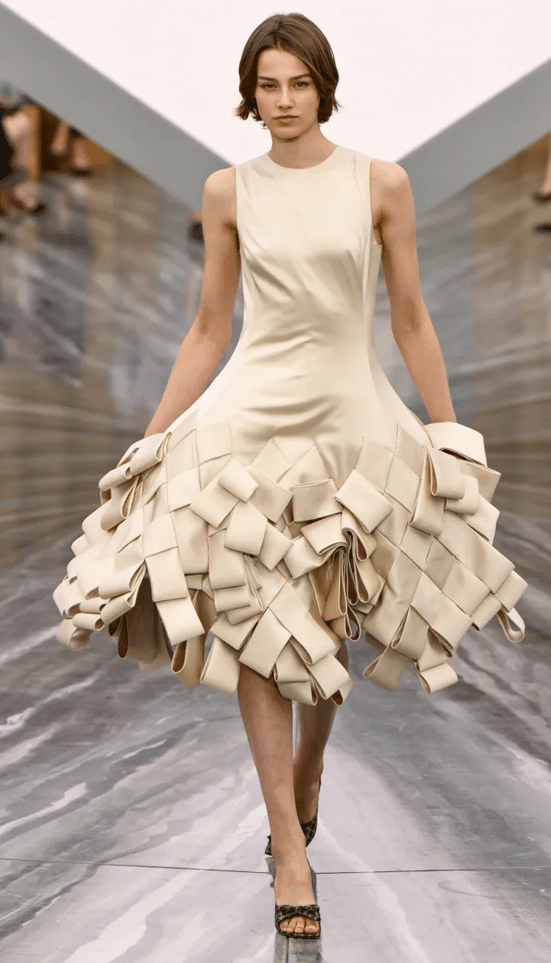

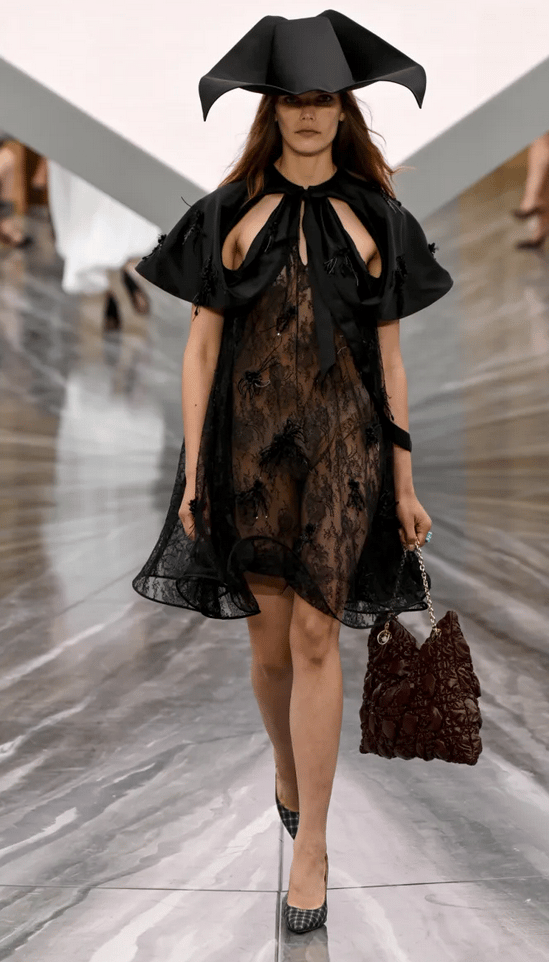

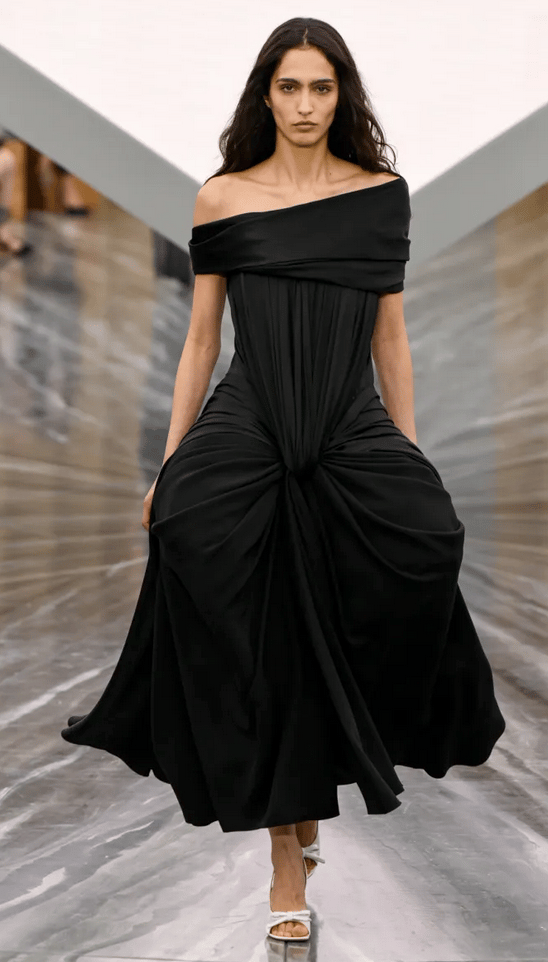

Photographed by Giovanni Giannoni, Courtesy of WWD
Louis Vuitton
In the Louis Vuitton S/S 2026 collection, designer Nicolas Ghesquière purposefully selected Anne of Austria’s intimate, non-public chambers within the Louvre to explore the theme of “the boundless freedom of the private domain.” This unique setting inspired a collection that imaginatively reinterpreted conventional “indoor” dressing trademarks like robes and nightdresses, mixing them with a variety of stylistic elements ranging from ornate monarchical collars to relaxed 1970s elegance. Ultimately, the collection made a dramatic statement about individual style and the ultimate luxury of dressing for oneself, complementing a broader seasonal theme of liberty through clothing.
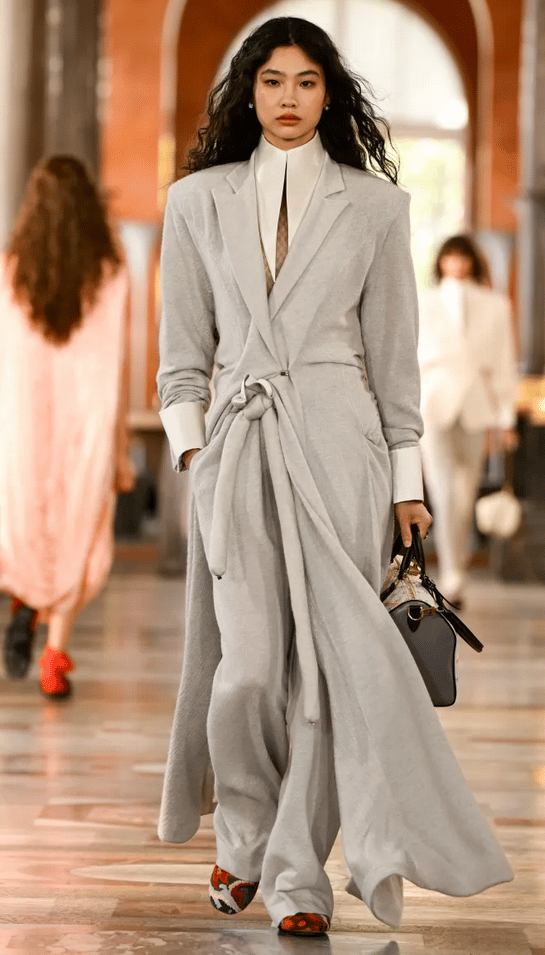

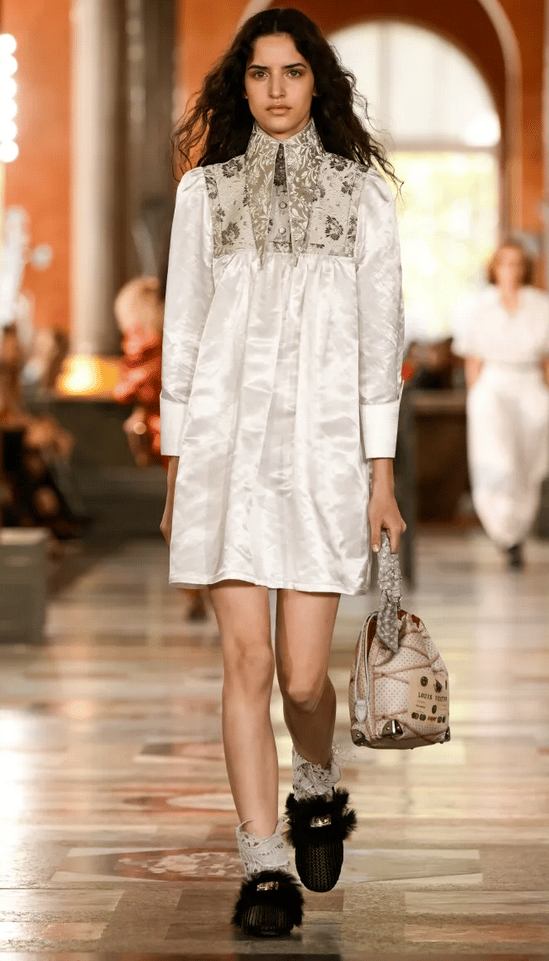

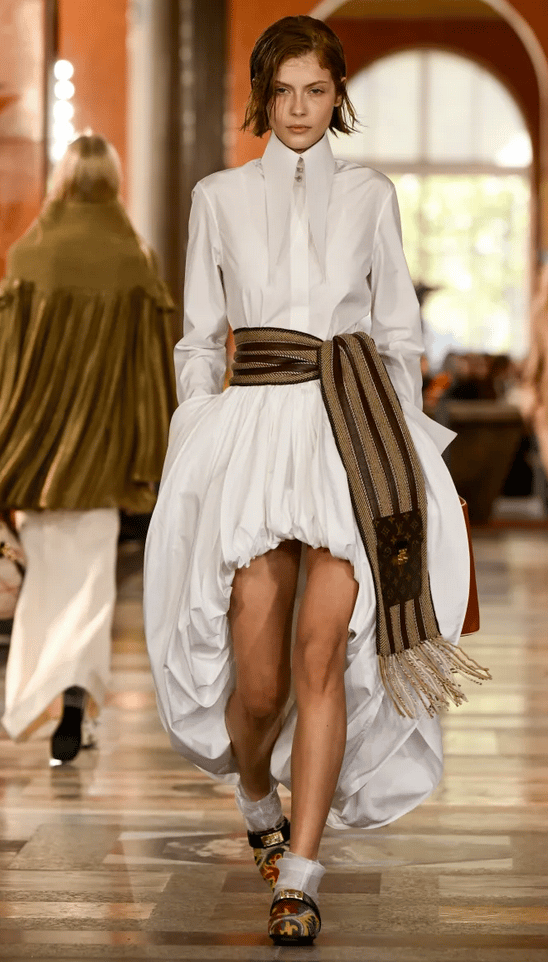

Photographed by Giovanni Giannoni, Courtesy of WWD
Discover more runway recaps, couture insights, and street-style highlights in our Fashion Archive — your exclusive front-row pass to the latest from Paris, London, Milan, and beyond.
Embrace the Art of Luxurious Living
Curated luxury experiences for discerning individuals worldwide.
© 2025. Stylish London Life. All rights reserved. Stylish London Life is not liable for the content of external websites linked to this platform. Part of SLL Global Living Ltd (16177510)

